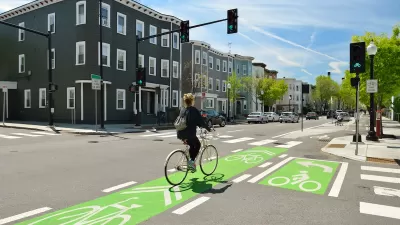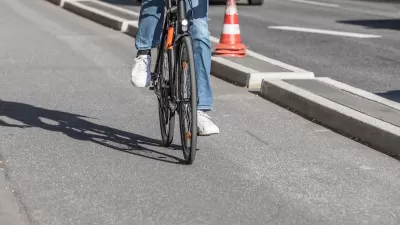After the death of a well-known Indianapolis cyclist and growing pedestrian death rates, the city expanded on its 2012 Complete Streets ordinance to highlight equity and renew efforts to make streets safer.

An article by Kayla Dwyer in the Indianapolis Star highlights the Indianapolis City Council’s renewed efforts to implement a Complete Streets policy. Originally passed in 2012, the city’s Complete Streets ordinance “drifted to the background.” Now, with pedestrian death rates rising and the death of a prominent local cyclist, the city council has issued updates to the policy. “The revised ordinance, adopted by the council Monday night, gets far more specific, and includes an expanded emphasis on transparency and equity.”
The legislation calls for applying Complete Streets principles to all types of projects and adds new performance metrics and reporting requirements. “[City-County Councilor John Barth] said the intention behind this revised policy is to compel the department to report publicly any instances of Complete Streets elements not being implemented after the design process is complete. The revision also requires DPW to identify barriers to Complete Streets implementation and potential solutions.” The ordinance also establishes a formal process for evaluating dangerous intersections and assessing potential safety improvements.
Department of Public Works director Dan Parker says DPW supports the updates, but cautions that the department needs more sustainable funding sources to achieve its goals.
FULL STORY: Complete Streets' 2.0: Eyeing safety, Indianapolis revises 10-year-old road design policy

Alabama: Trump Terminates Settlements for Black Communities Harmed By Raw Sewage
Trump deemed the landmark civil rights agreement “illegal DEI and environmental justice policy.”

Planetizen Federal Action Tracker
A weekly monitor of how Trump’s orders and actions are impacting planners and planning in America.

Why Should We Subsidize Public Transportation?
Many public transit agencies face financial stress due to rising costs, declining fare revenue, and declining subsidies. Transit advocates must provide a strong business case for increasing public transit funding.

Understanding Road Diets
An explainer from Momentum highlights the advantages of reducing vehicle lanes in favor of more bike, transit, and pedestrian infrastructure.

New California Law Regulates Warehouse Pollution
A new law tightens building and emissions regulations for large distribution warehouses to mitigate air pollution and traffic in surrounding communities.

Phoenix Announces Opening Date for Light Rail Extension
The South Central extension will connect South Phoenix to downtown and other major hubs starting on June 7.
Urban Design for Planners 1: Software Tools
This six-course series explores essential urban design concepts using open source software and equips planners with the tools they need to participate fully in the urban design process.
Planning for Universal Design
Learn the tools for implementing Universal Design in planning regulations.
Caltrans
Smith Gee Studio
Institute for Housing and Urban Development Studies (IHS)
City of Grandview
Harvard GSD Executive Education
Toledo-Lucas County Plan Commissions
Salt Lake City
NYU Wagner Graduate School of Public Service





























